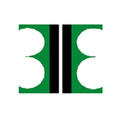Summary of IS: 3043 Code for Earthing Practice.
All medium voltage equipment shall be earthed by two separate and distinct connections with earthIn the case of high.
Extra high voltage – the neutral points shall be earthed by not Less than two separate and distinct connections with earth, each having its own electrode at the generating station or substation and may be earthed at any other point with electrodes having sufficient distance between them not to interfere with each other. If necessary, the neutral may be earthed through suitable resistance / impedance.
As far as possible, all earth connections shall be visible for inspection.
No cut-out, link or switch other than a linked switch arranged to operate simultaneously on the Earthed or earthed neutral conductor and the live conductors shall be inserted on any supply System. This however does not include the case of a switch for use in controlling a generator or a transformer for test purposes.
Plate electrodes shall be of the size at least 600 mmX 600 mm. Plates are generally of cast iron not lessthan 12 mm thick and preferably ribbed. The earth connection should be joined to the plate at not less than two separate points. Plate electrodes, when made of GI or steel shall be not less than 6 mm in thickness. Plate electrodes of Cu shall be not less than 3 mm in thickness. The depth at which plates are set should be such as to ensure that the surrounding soil is always damp.
Pipes may be of cast iron of not less than 100mm diameter, 2.5 to 3 m long and 13 mm thick. Such pipes cannot be driven satisfactorily and may, therefore, be more expensive to install than plates forthe same effective Area. Earthing electrode shall consist of a GI pipe (class B of approved make), not less than 40 mm dia and 3 meters long. The electrode shall beburied vertically in the ground as far as practicable below permanent moisture level, but in any case not less than 3 meters below ground level. The electrode shall be in one piece and no joints shall be allowed in the electrode.
Water pipes shall not be use as consumer earth electrodes.
Under fault conditions, the earth electrode is raised to a potential with respect to the general mass of the earth that can be calculated from the prospective fault current and the earth resistance of the electrode.The voltage gradient at the surface of the ground may also constitute a danger to life, especially where cattle are concerned.
The materials used for making connections have to be compatible with the earth rod and the copper earthing conductor so that galvanic corrosion is minimized. In all cases, the connections have to be mechanically strong. The cross-sectional area of every protective conductor which does not form part of the supply cable or cable enclosure shall be in any case, not less than
a) 2.5 mm2, if mechanical protection is provided
b) 4 mm2, if mechanical protection is not provided.
Joints of protective conductors shall be accessible for inspection and testing except compound-filled or encapsulated joints. No switching device .shall is inserted in the protective conductor, but joints which can be disconnected for test purposes by use of a tool may be provided.
An auxiliary earth electrode shall be provided electrically independent of all other earthed metal, for example, constructional metalwork, pipes or metal-sheathed cables. This requirement is considered to be fulfilled if the auxiliary earth electrode is installed at a specified distance from all other earthed metal.
The earthing conductor leading to the auxiliary earth electrode shall be isolated to avoid contact with the protective conductor or any of the parts connected thereto.
In TN systems, for cables in fixed installations having a cross sectional area not less than 10 mm2 for copper and 16 mm2 for aluminum, a single conductor may serve both as protective conductor and neutral conductor, provided that the part of the installation concerned is not protected by a residual current-operated device.
However, the minimum cross sectional area of a PEN conductor may be 4 mm2, provided that the cable is of a concentric type conforming to Indian Standards and that duplicate continuity connections exist at all joints and terminations in the run of the concentric conductors.
When the source of energy is privately owned, there should be no metallic connection with the General public supply unless there has been consultation with the electricity authority concerned. It should be emphasized that an installation together with its source of energy may not consistentirely of one particular type of system. In such cases, each part of that installation may be required to be treated separately without detriment to other parts of the same installation.
RCD’s Having Minimum Operating Currents Greater Than 30 mA – These devices are intended togive indirect shock risk protection.
Distance between two earthing pit is 2 X Length of earthing electrode. If ground resistance is less than plate earthing (if hard rock) than Pipe earthing shall be used. Resistance between two earthing pit is negligible.
Earthing of lighting protection should not mix with power system earthing. Lighting protection earhing should be 10 time stronger than normal earthing (use copper bus strip instead of wire)
Jointing of earthing strip shall be overlap of min 50mm and for earthing wire overlapping shall be min40mm
For Plate earthing, At bottom 150mm layer of Salt and charcoal powder shall be installed than Plate shall be installed.Alternate layer of 150mm of Salt and charcoal power shall be used up to 2.5 meter. Min 120kg of charcoal power and 120kg of salt shall be used for each earthing pit. The plate \ pipe electrode, as far as practicable, shall be buried below permanent moisture level but in no case not less than 2.5 M below finished ground level
Pl contact 3E Solutions for any need related to Earthing or Earthing installation in Rajasthan including Jaipur, Ajmer, Jodhpur, Bikaner, Udaipur and Kota


